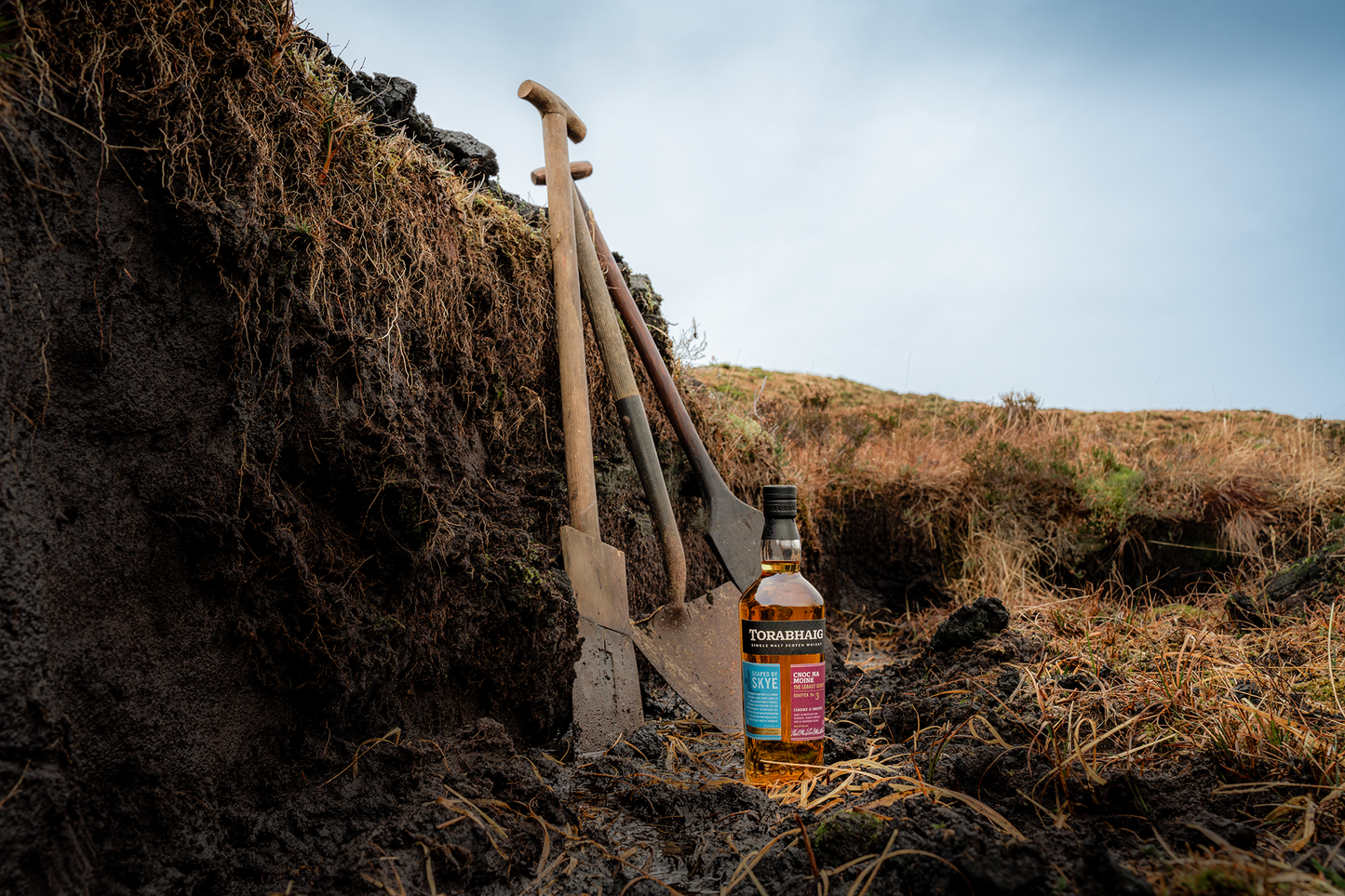Torabhaig Club member and resident peat enthusiast Dr Mike Billett returns as a guest writer - this time with a deeper dive into one of the most mysterious elements of peated whisky: phenols.
In this new piece, Mike unpacks the science behind the smoke - from how phenols form during kilning, to the reason why the same PPM can taste wildly different from one dram to the next. It’s a fascinating look inside the flavour compounds that give peated whisky its character - and the quiet chemistry that underpins Smoke with Taste.
So, if you’ve ever wondered what really makes a smoky dram sing - this one’s for you.
-
Talk smoky whisky and the conversation quickly moves onto phenols. What is the peating level - light, medium, heavy, or even super-heavy? Why do whiskies peated to the same level taste different? 'Malted to a mind-boggling 152.7 ppm' - what does it mean? Time to dig deeper, open the “black-box”, explore how we measure phenols and what happens during whisky making.
Burning peat in a kiln produces an array of combustion products that fly energetically upwards towards the drying barley - water, carbon dioxide, furfural (an almond, sweet biscuity flavour compound), assorted non-phenolic hydrocarbons and the all-important phenols. The last three are all types of congener, the flavour elements of whisky. Some stick to the grain, some don’t. The phenols produced as heat fractures their large polyphenolic precursors, are small, light and volatile, readily absorbed onto barley husks giving the malt that smoky aroma and flavour. Turn up the heat, increase the air flow, use damp instead of dry peat. Change the conditions within the kiln and you change the flavours in the drying malt, as the chemistry of combustion works its alchemy.
Phenolic compounds are all around us, manufactured naturally by plants and micro-organisms. They were identified chemically at the end of the 18th century and first isolated in 1834 from coal tar. They quickly found a use that persists to this day, as antiseptics, disinfectants, effective preservatives and more recently as flavourings. The most basic is a compound called phenol that has the chemical formula C6H5OH - a ring of carbon atoms with a hydroxyl (-OH) group attached to the outside. Somewhat confusingly the name “phenol” can either be used for this specific compound, or as the generic term to describe the wider group of organic compounds in which it belongs.
A sensory panel is trained to nose and identify individual members of the phenol group - the so-called three “phenolic families”. Cresols - powerful antiseptic and medicinal; phenols - softer and sweeter versions of the first-aid box; guaiacols - a more enigmatic group with spices, herbs and perfumes mixed in with the bandages. Cresols and guaiacols have an additional methyl (-CH3) or methoxy (-OCH3) functional group attached to the basic carbon ring. This can position itself anywhere and remarkedly these small structural differences profoundly affect what the panelists nose. Each compound has a different boiling point and although the phenols as a group come off later in the spirit run, a distiller can “cut” at different points to capture the desired flavours and create important differences in the nature of the new make spirit. The chemistry and physics of kilning and distillation drives the aromas and tastes of the peated spirit.
In 1968 a scientific paper was published by a chemist working for an English maltster that transformed the manufacture of peated malt by providing a means of measuring its overall phenolic content in ppm (parts per million). It became known as the “Macfarlane Method” after its founder and involved extraction and oxidation of the phenols prior to their complexation with a coloured dye. The more intense the colour the higher the phenol concentration. Over time this simple colorimetric method was modified and quickly became the industry-wide standard for measuring “total phenols” in peated malt.
Methods like chromatography can open up the phenol “black-box” to reveal what lies within. They make use of differences in chemical structure that affect solubility and volatility, each compound appearing as an individual peak on a graph. The higher the peak, the higher the concentration. Put simply, phenolic compounds all behave slightly differently, and these differences are exploited by high pressure liquid chromatography (HPLC), the industry’s instrument of choice. Since the method identifies all or most of the important volatile phenols, it has increased accuracy and gives a higher overall total phenol value.
Interestingly, the two methods sit side-by-side in a modern whisky laboratory, with no agreed single standard. Phenol content has now become a need-to-know piece of chemistry for the whisky drinker, but it is also important to recognize that in the marketing of peated whisky the ppm phenol concentration of the malted barley is used almost exclusively, not the final concentration in the spirit. Torabhaig are one of the rare exceptions, stating both the in-grain phenols (malted barley) and the residual phenols (distilled spirit), the latter being significantly lower than the starting value. Addition of water during whisky making, removal of smoky husks in the draft after mashing, phenols sticking to pipes and vessels, losses during distillation; all contribute to the drop in phenol concentration. Maturation also lessens the smoky aromas, but the experts tell me this is more about the growing influence of other congeners produced by the wood, rather than a drop in phenol concentration. As it spends longer in the cask will Torabhaig peated single malt become even more well-tempered?
To enjoy Dr Mike Billet's previous insights on the world of peat, click here.


